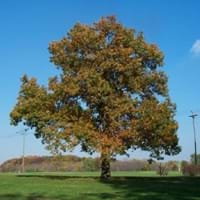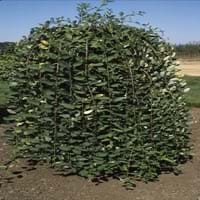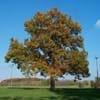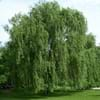Life Span
Perennial
Perennial
Origin
North America, United States, Northeastern United States, Mid-Atlantic United States, Southeastern United States, North-Central United States, Central United States, South-Central United States, Canada
Europe, Western Asia
Types
Japanese Evergreen Oak, Sawthorn Oak, Oriental White Oak
Not Available
Number of Varieties
Not Available
Habitat
Woodland Garden Canopy
Hedge, Woodland Garden Canopy
USDA Hardiness Zone
4-8
5-9
Sunset Zone
2a, 2b, 3a, 3b, 4, 5, 6, 7, 8, 9, 14, 15, 16, 17
2a, 2b, 3a, 3b, 4, 5, 6, 7, 8, 9, 10, 11, 14, 15, 16, 17, 18, 19, 20, 21, 22, 23, 24
Habit
Upright/Erect
Upright/Erect
Flower Color
Red, Light Yellow, Yellow green
Yellow, Silver
Flower Color Modifier
Bicolor
Bicolor
Fruit Color
Brown, Sandy Brown, Chocolate
Green
Leaf Color in Spring
Green, Copper
Dark Green
Leaf Color in Summer
Dark Green
Dark Green
Leaf Color in Fall
Orange, Brown, Dark Red
Dark Green
Leaf Color in Winter
Not Available
Not Available
Plant Season
Spring, Summer, Fall, Winter
Spring, Summer, Fall, Winter
Sunlight
Full Sun, Partial Sun
Full Sun
Type of Soil
Clay, Loam, Sand
Loam
The pH of Soil
Acidic, Neutral
Acidic, Neutral, Alkaline
Soil Drainage
Average
Well drained
Bloom Time
Spring
Early Spring
Tolerances
Wet Site, Drought
Not Available
Where to Plant?
Ground
Ground
How to Plant?
Seedlings, Transplanting
Cuttings, Seedlings
Plant Maintenance
Medium
Medium
Watering Requirements
Average Water Needs, Keep the ground moist but not water-logged, Needs a lot of water initially, occasional watering once established, Water Deeply
Requires consistently moist soil
In Summer
Lots of watering
Lots of watering
In Spring
Moderate
Moderate
In Winter
Average Water
Average Water
Soil pH
Acidic, Neutral
Acidic, Neutral, Alkaline
Soil Type
Clay, Loam, Sand
Loam
Soil Drainage Capacity
Average
Well drained
Sun Exposure
Full Sun, Partial Sun
Full Sun
Pruning
Remove branches, Remove damaged fruit, Remove damaged leaves, Remove dead branches, Remove dead leaves, Remove dead or diseased plant parts, Remove deadheads
Remove damaged leaves, Remove dead branches, Remove dead leaves
Fertilizers
All-Purpose Liquid Fertilizer, High amounts of nutrients, organic fertlizers
Use nitrogen rich soil
Pests and Diseases
Red blotch
Blight, Canker, Leaf spot, Powdery mildew
Plant Tolerance
Drought, Wet Site
Drought
Flowers
Insignificant
Showy
Flower Petal Number
Not Available
Not Available
Edible Fruit
Not Available
No
Fragrant Bark/Stem
Yes
No
Foliage Texture
Medium
Medium
Foliage Sheen
Glossy
Matte
Attracts
Birds
Borers, Caterpillar, Lacebugs, Not Available
Allergy
Hay fever, Itchy eyes, Runny nose, sneezing, Watery eyes, Whooping Cough
Severe allergen
Aesthetic Uses
Not Used For Aesthetic Purpose
Bonsai, Showy Purposes
Beauty Benefits
Not Available
Not Available
Environmental Uses
Air purification, Nesting sites for birds, Shadow Tree, Shelter for wildlife, Wildlife
Air purification
Medicinal Uses
Antiaphonic, Antiasthamatic, Astringent, Chronic fatigue, Cold, Dysentry, Emetic, Febrifuge, Haemorrhages, Indigestion, Opthalmic, Salve, Sore Eyes, Sore throat, Tonic, Treating fever
Anodyne, Aphrodisiac, Astringent, Febrifuge, Ophthalmic
Part of Plant Used
Inner Bark, Leaves, Seeds
Inner Bark, Leaves
Other Uses
Tannin, Used as a dye, Used as fuel, Used as insect repellent, Used for woodware
Basketary, Used as a cereal in making bread, porridge, used for making charcoal, Used to make leather
Used As Indoor Plant
No
Yes
Used As Outdoor Plant
Yes
Yes
Garden Design
Feature Plant, Shade Trees
Cutflower, Feature Plant, Foundation, Mixed Border
Botanical Name
QUERCUS velutina
SALIX caprea 'Kilmarnock'
Common Name
Black Oak
Pussy Willow, Weeping Pussy Willow
In Hindi
Black Oak Tree
Weeping Pussy Willow
In German
Schwarz Oak Tree
Weinend Salweide
In French
Noir Oak Tree
Weeping Willow Pussy
In Spanish
Negro del árbol de roble
Llorando sauce de gatito
In Greek
Black Oak Tree
Κλάμα Μουνί Willow
In Portuguese
Carvalho Preto
Chorando Borrazeira
In Polish
Czarny Dąb
Płacząca Pussy Willow
In Latin
Niger quercum ligno
Pussy flentes salices
Phylum
Magnoliophyta
Magnoliophyta
Class
Magnoliopsida
Magnoliopsida
Family
Fagaceae
Salicaceae
Clade
Angiosperms, Eudicots, Rosids
Angiosperms, Eudicots, Rosids
Tribe
Cherokee
Not Available
Subfamily
Not Available
Not Available
Number of Species
Not Available
Season and Care of Black Oak and Weeping Pussy Willow
Season and care of Black Oak and Weeping Pussy Willow is important to know. While considering everything about Black Oak and Weeping Pussy Willow Care, growing season is an essential factor. Black Oak season is Spring, Summer, Fall and Winter and Weeping Pussy Willow season is Spring, Summer, Fall and Winter. The type of soil for Black Oak is Clay, Loam, Sand and for Weeping Pussy Willow is Loam while the PH of soil for Black Oak is Acidic, Neutral and for Weeping Pussy Willow is Acidic, Neutral, Alkaline.
Black Oak and Weeping Pussy Willow Physical Information
Black Oak and Weeping Pussy Willow physical information is very important for comparison. Black Oak height is 2,438.40 cm and width 1,219.20 cm whereas Weeping Pussy Willow height is 180.00 cm and width 180.00 cm. The color specification of Black Oak and Weeping Pussy Willow are as follows:
Black Oak flower color: Red, Light Yellow and Yellow green
Black Oak leaf color: Green and Copper
Weeping Pussy Willow flower color: Yellow and Silver
- Weeping Pussy Willow leaf color: Dark Green
Care of Black Oak and Weeping Pussy Willow
Care of Black Oak and Weeping Pussy Willow include pruning, fertilizers, watering etc. Black Oak pruning is done Remove branches, Remove damaged fruit, Remove damaged leaves, Remove dead branches, Remove dead leaves, Remove dead or diseased plant parts and Remove deadheads and Weeping Pussy Willow pruning is done Remove damaged leaves, Remove dead branches and Remove dead leaves. In summer Black Oak needs Lots of watering and in winter, it needs Average Water. Whereas, in summer Weeping Pussy Willow needs Lots of watering and in winter, it needs Average Water.





